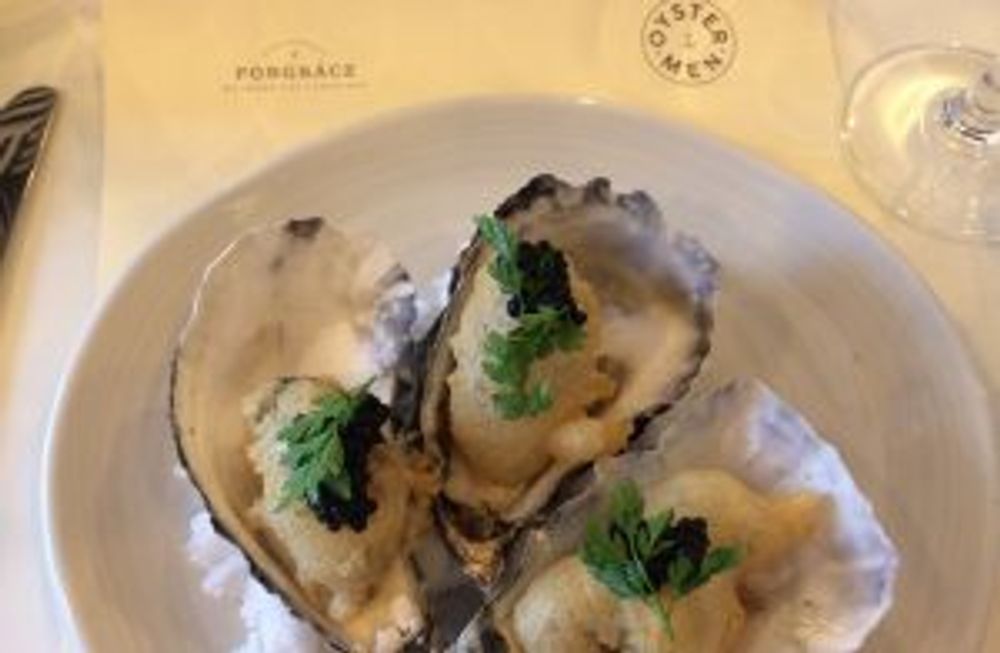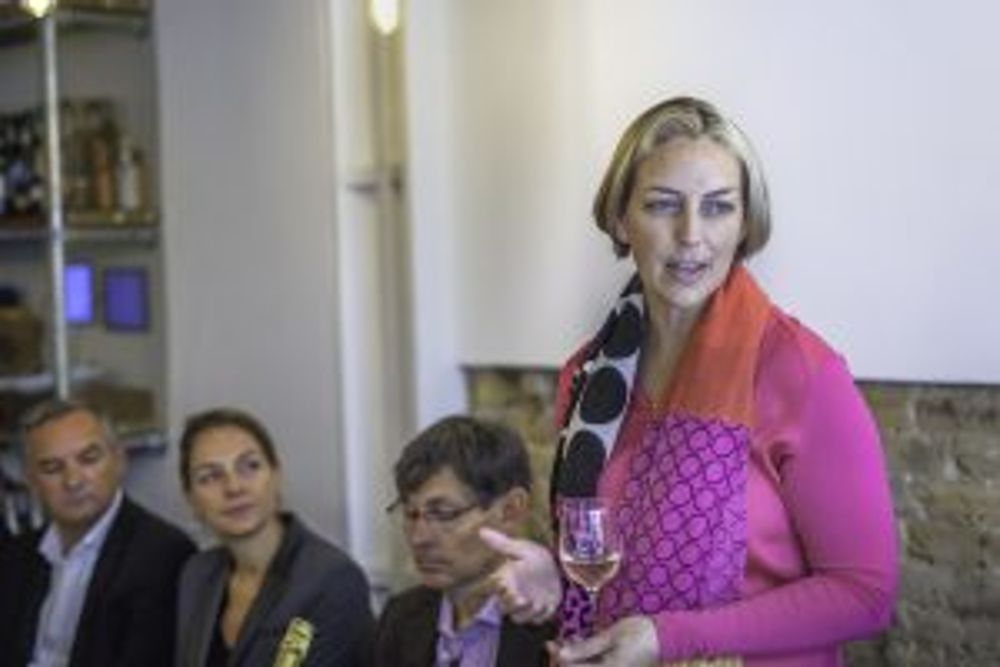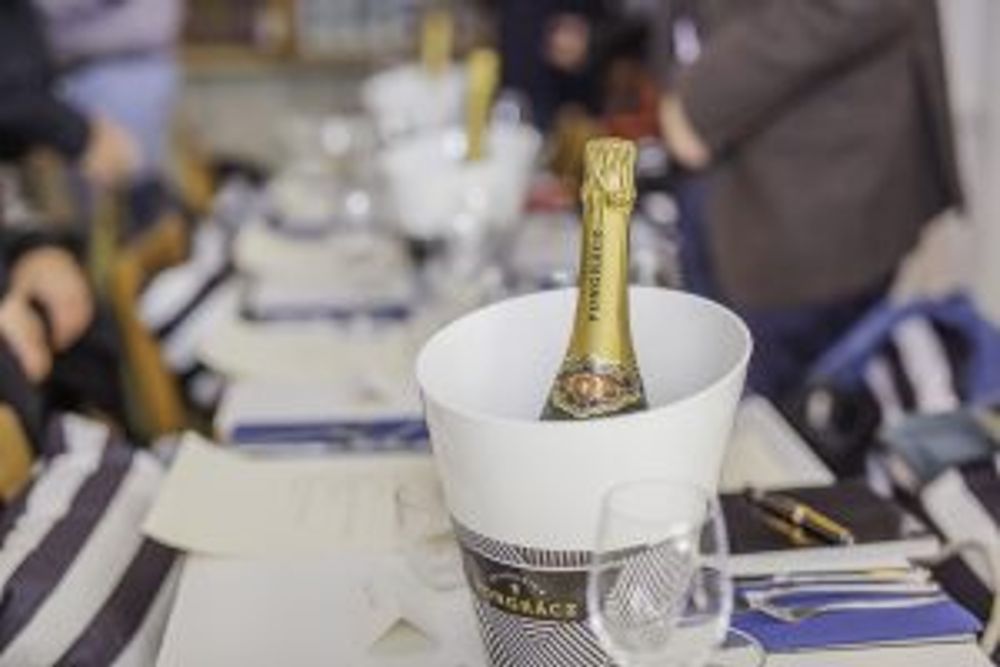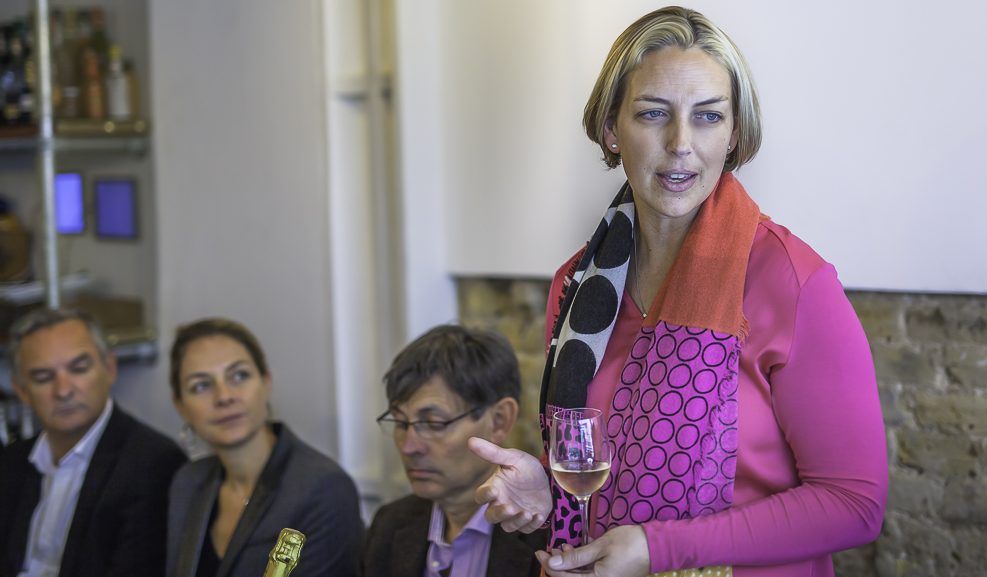Pongrácz Brut NV, the vintage Desiderius and Brut Rosé NV are all sampled with seafood. “People love to talk brut, but drink sweet,” says Basson.
Life is full of choices. Is it to be the tempura oysters with jet black osetra caviar or the roast hake with squid in risotto? And which dish will be paired with the Pongrácz Brut NV and which with the winery’s Desiderius 2009?
Luckily for us, as we gather in Covent Garden’s new Oystermen restaurant, the burden of these decisions has been taken for us. We are to have the oysters paired with the non-vintage followed by the hake and the vintage grand cuvée. Then we are to round things off with a non-vintage brut rosé.
If only life were always so agreeable.
We start off with the oysters.

Victor Smart joins the #foodporn crowd on Instagram
None of us is exactly from the Instagram generation demographic, yet we can’t resist the impulse to whip out our phones and snap the food such is the presentation. As we chomp into our first plump morsel of mollusc there are unseemly squeals of ‘wow’. The freshness is amazing.
As for the wine, this is my first encounter with the Prográcz non vintage and I am impressed. It has those yeasty, biscuity flavours that I associate with Champagne. And there are vigorous bubbles aplenty.

Elunda Basson, trying to elevate the Méthode Cap Classiques
Sitting alongside me is Elunda Basson, the winemaker. She’s chatty and approachable and it surprises me to hear her explain that she used to prefer plants and animals to people. But she has put her love of things horticultural to good effect.
She has been working on Méthode Cap Classiques (Cape méthode champenoise wines) for a decade and she’s determined to help elevate the prestige of the whole product category. She believes that the Cap Classiques, unlike proseccos and cavas, have the potential to rival Champagnes some of whose basic characteristic they share. Indeed she and her fellow Cape winemakers trek to Epernay every couple of years to hone their techniques.
Basson describes the Brut NV, the mainstay of the winery’s sparklers, as ‘racy’. The wine, available online for around £12 a bottle, makes an immediate impact not just with those lovely flavour cues taken from Champagnes but also with big bold bubbles.
But the winemaker is soon coaxing us to taste the vintage Desiderius. Appearance-wise the bottle looks utterly unlike most sparkling wines. The heavily fluted bottle imported from France bears no label and seems to have taken its design cues from an eau de toilette bottle: Marilyn Monroe would have certainly approved.

Selling at nearly three times the price of the non vintage, the Desiderius was first made in 2000. In Basson’s view it is proof that the Cape wines have the backbone to age well in the bottle without becoming flabby or fat. Where the non vintage is racy, I would call the vintage wine sedate. It is well structured, the bubbles are far softer and the yeastiness is nicely controlled.
Basson explains that her most discerning customers ‘look beyond the bubbles’ and savour the expression of the Chardonnay which makes up 70 per cent of the wine; ‘extremists’ (my word, not hers) even decant the stuff.

Elunda Basson, winemaker at Pongrácz
Last up is the Brut Rosé NV served with macerated strawberries and mascarpone mousse. This is a crowd pleaser aimed for a very specific market. Like many others, Basson thought the rosé fashion would pass but it is still growing – and it is women who are buying. To suit their palates the wine is slightly sweeter than the other two Pongrácz sparklers. As Basson puts is succinctly, “people love to talk brut, but drink sweet”.
While the branding on the bottles is unchanged, Distell, which owns the brand, is now rebranding Pongrácz marketing materials with a striking black and white stripes imagery.
Wines are available to the on-trade through Matthew Clark and to the consumer online through Amazon.
































